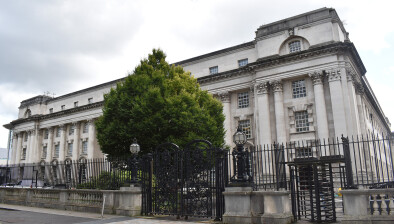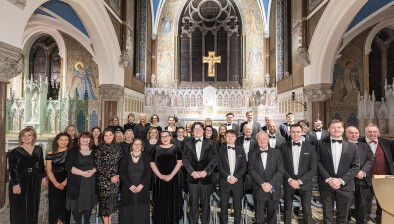NI: Court of Appeal: Environmentalist loses challenge to new road beside Lough Neagh
An environmentalist who argued that a section of the proposed road from Randalstown to Castledawson would threaten protected species, and therefore breach EU legislation, has had his appeal dismissed in the Court of Appeal in Belfast.

About this case:
- Judgment:
Delivering the judgment of the Court, Lord Chief Justice Declan Morgan said there was no suggestion that the Department for Infrastructure failed to comply with any statutory requirements when assessing the impact of the road.
High Court
In March 2017, Mrs Justice Keegan dismissed the application by environmental campaigner Mr Chris Murphy to quash the decision by the Minister in the Department for Infrastructure to proceed with that part of the Randalstown to Castledawson road dualling scheme from Toome to Castledawson.
The challenge centred on the significance of the Lough Neagh, Lough Beg and Portman Lough areas as sites of special scientific interest, special protection areas (SPA) and special areas of conservation for wintering and breeding bird species. While the proposed road would be outside the boundary of the SPA, this land provides foraging and roosting locations for some protected species.
Mr Murphy contended that it gave rise to three issues of law in respect of requirements contained in Council Directive 92/43/EEC on the Conservation of Natural Habitats and of Wild Fauna and Flora (the Habitats Directive) and that these issues should be referred to the European Court of Justice.
Court of Appeal
Mr Murphy contended that the Minister’s decision was unlawful as no appropriate assessment was carried out in accordance with the requirements of Article 6(3) of the Habitats Directive.
The underlying contention advanced by Mr Murphy was that alternative routes to the south were available which would not have adversely affected the SPA. The feature of concern was the availability of foraging land outside the SPA for the Whooper Swan.
Mr Murphy accepted that he was now too late to challenge the Trunk Road T8 (Toome to Castledawson) Order (Northern Ireland) 2011 but submitted:
Firstly, the Court of Appeal stated that the 2011 Order for this section of road constituted the authorisation for carrying out the proposed roadworks until it was either successfully challenged or alternatively was revoked.
Secondly, Article 6(2) established an obligation of general protection aimed at avoiding deterioration and disturbances in the habitats which could have significant effects. Article 6(2) did apply in this case but Article 6(3) had also been complied with and a further assessment was not required.
It said the 2016 statement did not purport to be a new appropriate assessment but it was intended to review the 2008 assessment in the light of up-to-date information and practices and address the impacts on each of the significant features. It excluded any likely significant effects except in relation to the Whooper Swan on the basis that the birds were mobile and had alternative foraging areas or that the birds were associated with open water areas or shoreline that were some distance from the scheme.
Thirdly, the Court accepted that it was possible that a different approach might have been taken to the assessment of impact but there was nothing in its view which suggested that the judgement of the Whooper Swan Management Group was erroneous or that it failed to identify any relevant disturbance or deterioration. This was a matter of judgement for WSMG as the competent authority, and there was no reason to disturb it.
Finally, the Court stated that a mitigation or protective measure was one which lessened the negative effects of a plan or project with the aim of ensuring that the integrity of the site was not adversely affected. A compensatory measure, by contrast, was one which does not achieve that goal within the narrower framework of the plan or project but seeks to counterbalance the failure to do so through different, positive effects in order to avoid a net negative effect. That analysis requires the identification of the feature at risk. In this case the protected feature was the Whooper Swan. The Court of Appeal concluded that there is no direct impact on the protected feature.







